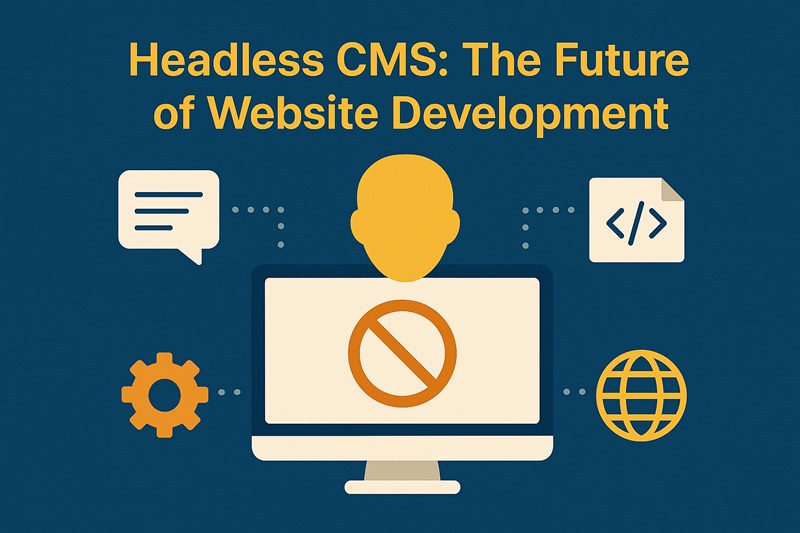Headless CMS: The Future of Website Development
In today’s fast-paced digital landscape, businesses are constantly seeking ways to deliver seamless online experiences. From responsive websites to mobile applications, the demand for flexible and scalable solutions has never been greater. This is where a Headless CMS (Content Management System) steps in as a game-changer, reshaping how websites and applications are built and managed.
What is a Headless CMS?
A Headless CMS is a back-end-only content management system that separates the content repository (the “body”) from the presentation layer (the “head”). Unlike traditional CMS platforms like WordPress or Joomla, which tightly couple content with design, a Headless CMS allows developers to deliver content to any front-end—whether it’s a website, mobile app, smart device, or even wearable technology—through APIs.
How Does It Differ From Traditional CMS?
Traditional CMS platforms typically bind content, themes, and plugins together, which works well for simple websites but creates challenges for modern multi-channel digital experiences. For example, if you want the same content on a website, mobile app, and IoT device, a traditional CMS often requires duplication or complex customization. A Headless CMS solves this by enabling content to be created once and distributed everywhere via APIs.
Key Benefits of Headless CMS
- Omnichannel Delivery: Publish content seamlessly across websites, mobile apps, smart TVs, and digital kiosks.
- Flexibility for Developers: Developers can use any front-end framework (React, Angular, Vue, etc.) without being tied to CMS templates.
- Faster Performance: Since content is delivered via APIs, websites load faster and offer smoother experiences.
- Scalability: Headless CMS can easily adapt as your business grows, handling increased traffic and content needs.
- Future-Proof: As new devices and technologies emerge, businesses can deliver content without rethinking their CMS.
Popular Headless CMS Platforms
Several Headless CMS platforms are leading the market today. Popular options include:
- Contentful: Known for its robust API and scalability.
- Strapi: An open-source solution offering flexibility for developers.
- Sanity: Provides real-time collaboration and structured content editing.
- Prismic: Simple and intuitive, widely used for marketing websites.
Use Cases of Headless CMS
Businesses across industries are adopting Headless CMS for a variety of use cases, such as:
- E-commerce: Delivering consistent product content across web, mobile, and in-store screens.
- Media & Publishing: Streamlining content distribution to multiple platforms instantly.
- Enterprises: Managing vast amounts of content across global websites and internal portals.
- Startups: Building scalable applications quickly without being tied to monolithic systems.
Why Headless CMS is the Future
The future of website development lies in delivering personalized, fast, and connected experiences. As user expectations continue to evolve, businesses need tools that allow them to innovate quickly and scale efficiently. A Headless CMS checks all these boxes by offering unmatched flexibility and omnichannel readiness. By decoupling the front-end from the back-end, businesses are free to adopt emerging technologies without being constrained by legacy systems.
Conclusion
Headless CMS is not just a trend—it’s a strategic shift in website development. It empowers developers with freedom, ensures faster digital experiences, and future-proofs businesses for upcoming technologies. Whether you are an enterprise, startup, or e-commerce store, adopting a Headless CMS can position your brand at the forefront of digital innovation.
In short, Headless CMS is paving the way for the future of website development—flexible, scalable, and ready for what’s next.





